Study of the Explosive Bridge Film Using Laser Shaping Technology
Abstract
:1. Introduction
2. Theory and Method
2.1. The Materials and Methods
2.2. Basic Theory
3. Results Analysis and Discussion
3.1. Shaping Design
3.2. Damage Micro-Topography under Different Laser Energy
3.3. Damaged Surface of Shaping and Non-Shaping Lasers
3.4. Simulation of the Temperature Field Distribution
3.5. Repair of Damage
4. Conclusions
- The effects of non-shaping and shaping laser damage energy on the surface morphology and ignition performance of copper films were analyzed by microscope and profilometer observation. The results showed that the surface roughness decreased with the decrease in laser energy, and the damaged area and damage depth increased with the increase in laser energy. Furthermore, the lower the energy, the more the damage was at the center than in the surrounding area. Moreover, the damage morphology was the same as the energy distribution of the Gaussian laser. The degree of damage under the shaping laser was relatively uniform.
- The simulation analysis showed that the temperature of the explosive bridge film increases with an increase in laser energy. Moreover, the shaping laser has a smaller damage area and a shorter laser action time than the non-shaping laser with equal energy. However, the ignition temperature of the explosive bridge film was 1100 K for the shaping laser and 850 K for the non-shaping laser.
- When the energy is relatively low, the non-shaping laser damage can be repaired using the heat flow method and the repair threshold of 41.45 mJ. For the shaping laser damage, the repair effect is better by the vaporization method with the repair threshold of 97.3 mJ.
- The shaping laser outperforms the non-shaping laser in repairing the defects or injuries on Cu explosive bridge film.
Author Contributions
Funding
Institutional Review Board Statement
Informed Consent Statement
Data Availability Statement
Conflicts of Interest
References
- Kong, D.; Sun, X.; Dong, Z.; Hu, Y.; Duan, J. Research progress of space beam shaping by femtosecond laser. Prog. Laser Photoelectron. 2020, 57, 195–214. [Google Scholar]
- Shan, C.; Zhao, Y.; Zhang, X. Laser damage threshold measurement of optical components based on Spatial resolution of Gaussian pulsed laser. Chin. J. Lasers 2018, 45, 152–159. [Google Scholar]
- Pan, Y. Laser Beam Shaping Using Aspheric Optical System; Dalian University of Technology: Dalian, China, 2010. [Google Scholar]
- Yin, Z.; Wang, Y.; Yin, S.; Qiang, J.; Lei, C.; Sun, X.; Yang, K. Design of semiconductor laser shaping system based on hyperboloid substrate microlens array. Chin. J. Lasers 2013, 40, 125–130. [Google Scholar]
- Li, R. Beam Shaping and Its Application in Micromachining of Femtosecond Laser; Graduate University of Chinese Academy of Sciences, Xi’an Institute of Optics and Precision Mechanics: Xi’an, China, 2015. [Google Scholar]
- Slimani, M.; Liu, J.; Xin, J.; Chen, J. Beam shaping of high power diode laser stack into homogeneous line. Optoelectron. Front. 2014, 7, 102–106. [Google Scholar] [CrossRef]
- Shi, G. Gaussian Beam Shaping Based on Aspherical Cylindrical Lens; Tianjin University of Technology: Tianjin, China, 2014. [Google Scholar]
- Liu, D. Research on Laser Ultrasonic Excitation and Detection Technology; North University of China: Taiyuan, China, 2015. [Google Scholar]
- Lindle, J.R.; Watnik, A.T.; Cassella, V.A. Efficient multibeam large-angle nonmechanical laser beam steering from computer-generated holograms rendered on a liquid crystal spatial light modulator. Appl. Opt. 2016, 55, 6. [Google Scholar] [CrossRef] [PubMed]
- Xue, P. Research on Performance Repair of Laser Components with Small Size Damage; Xi’an University of Technology: Xi’an, China, 2019. [Google Scholar]
- Li, Y.; Jiang, X.; Fang, G.; Wang, C.; Yu, Q.; Jiang, W. Microstructure and fracture performance of 304 stainless steel laser repairs with Al2O3 nano-particles. Mater. Test. 2019, 61, 2. [Google Scholar] [CrossRef]
- Lu, C.W.; Wang, H.S.; Chen, H.G.; Wu, J.J.; Chiang, M.F. Effects of heat treatment and Nd: YAG laser repair welding parameters on the microstructure and properties of a Cu-Ni-Si-Cr mold alloy. Mater. Sci. Eng. A 2021, 799, 1–5. [Google Scholar] [CrossRef]
- Lin, Y.; Jiang, Y.; Wei, H.; Fan, W.; Li, X. Damage repair of dielectric film based on femtosecond laser micromachining. Acta Phys. Sin. 2015, 64, 179–185. [Google Scholar]
- Cai, F.; Tang, R.; Wang, S.; He, S. A compact line-detection spectrometer with a Powell lens. Optics 2018, 155, 1. [Google Scholar] [CrossRef]
- Ren, X.; Xie, R.; Xue, Y.; Liu, L.; Zhang, J.; Wang, K. Study on ignition performance of Ni-Cr thin film Energy converter. J. Pyrotech. 2011, 1, 4–6. [Google Scholar]
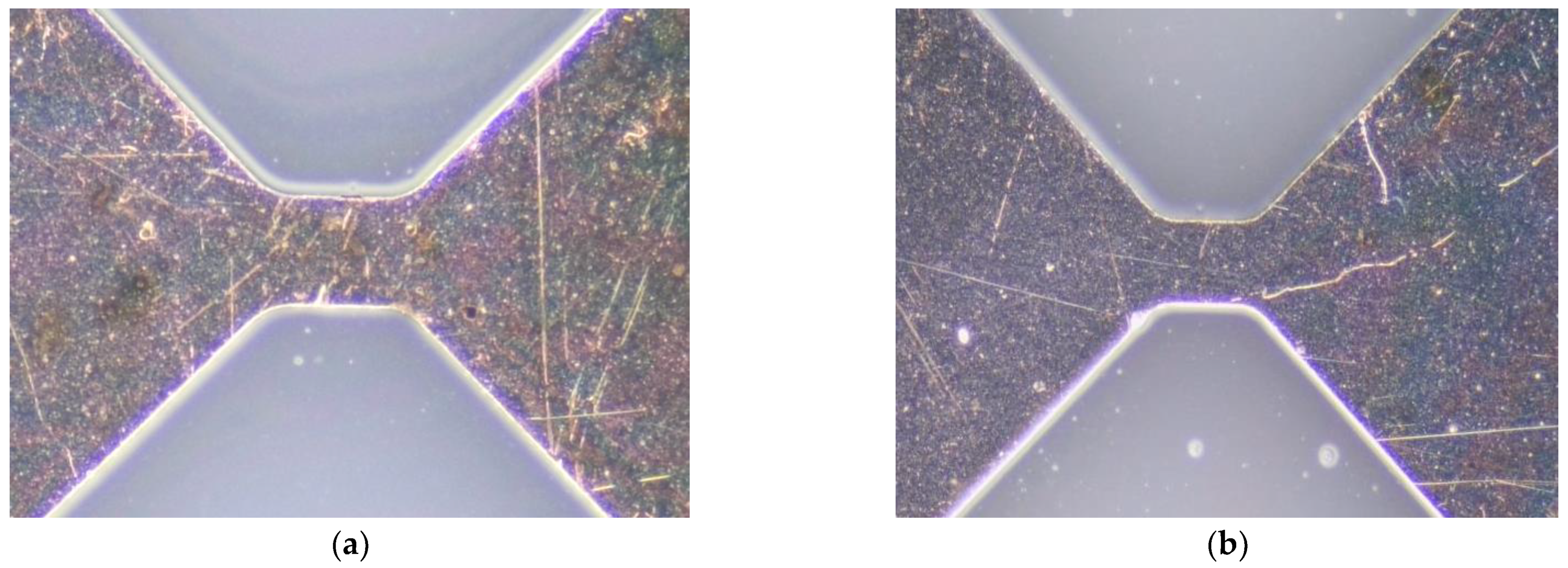
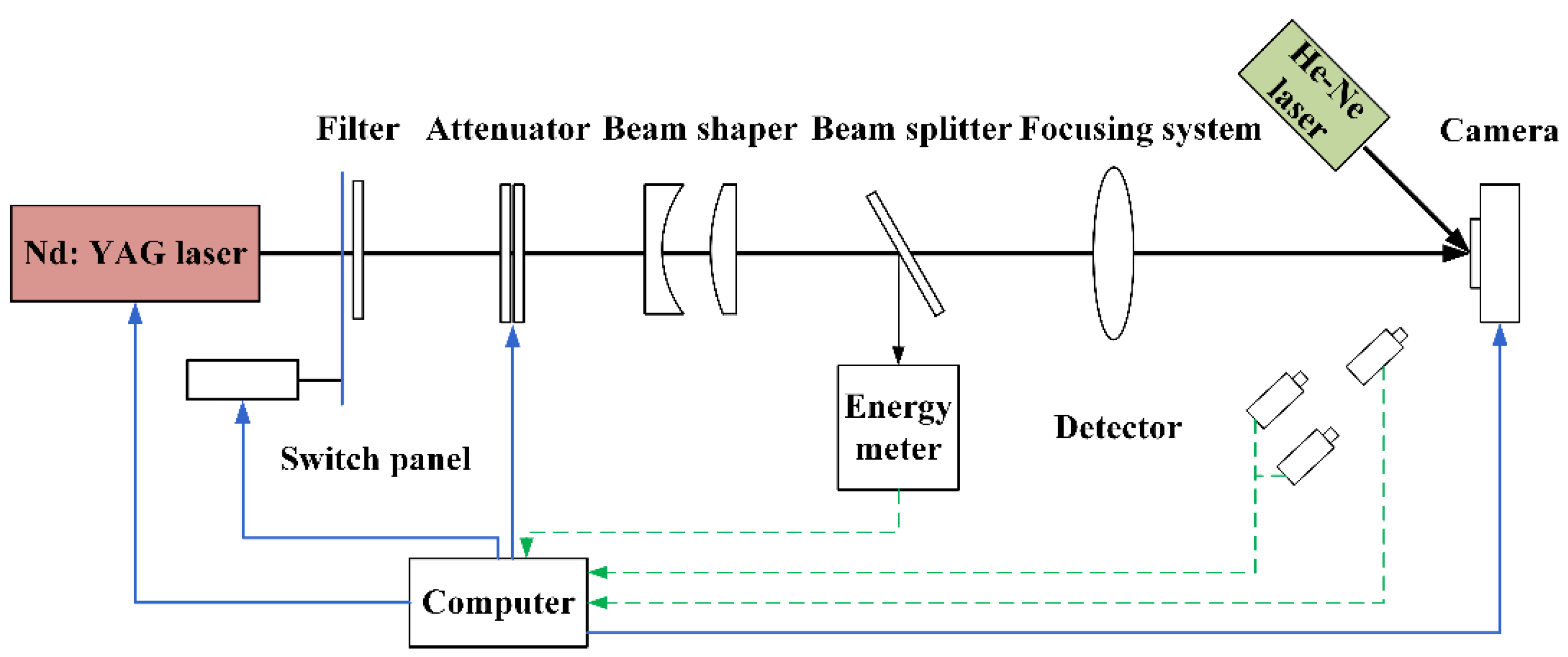

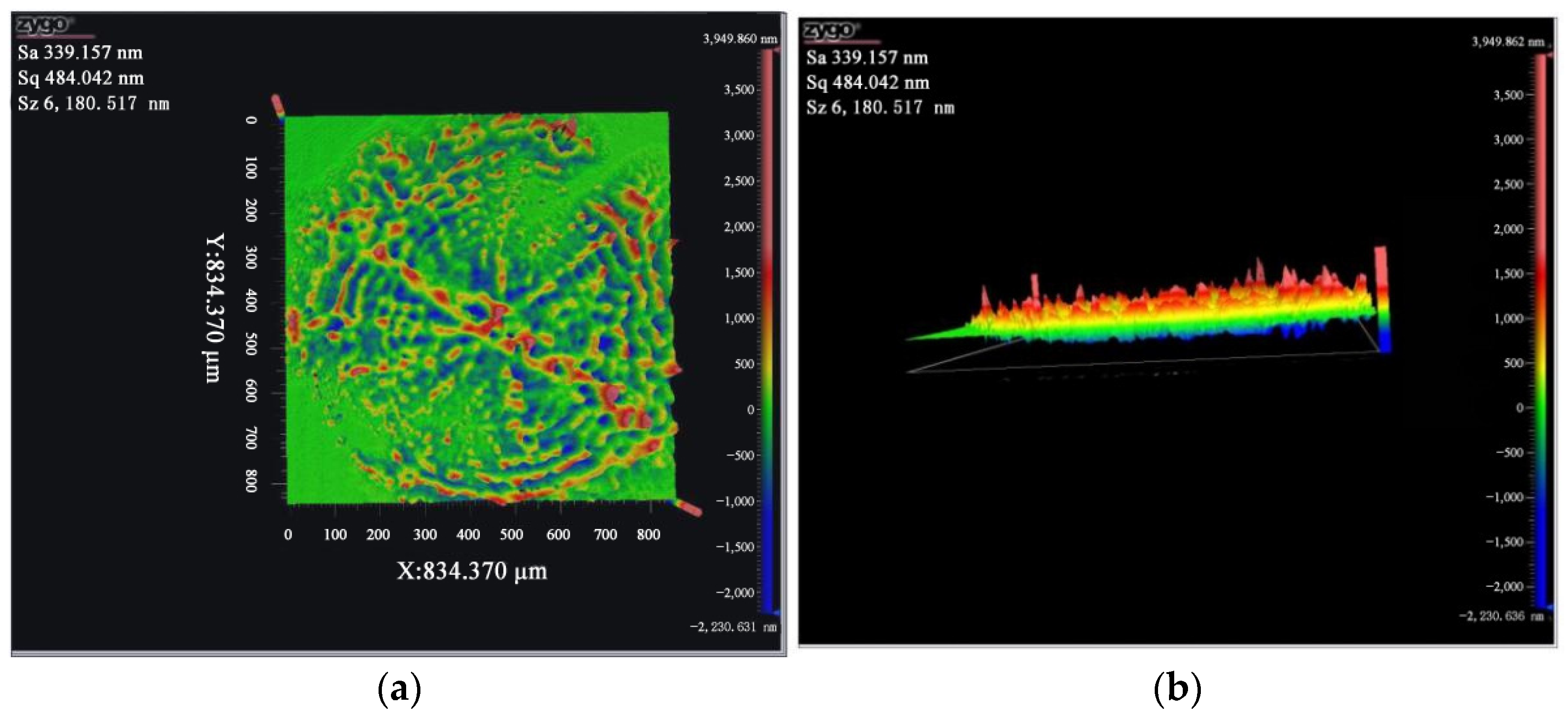
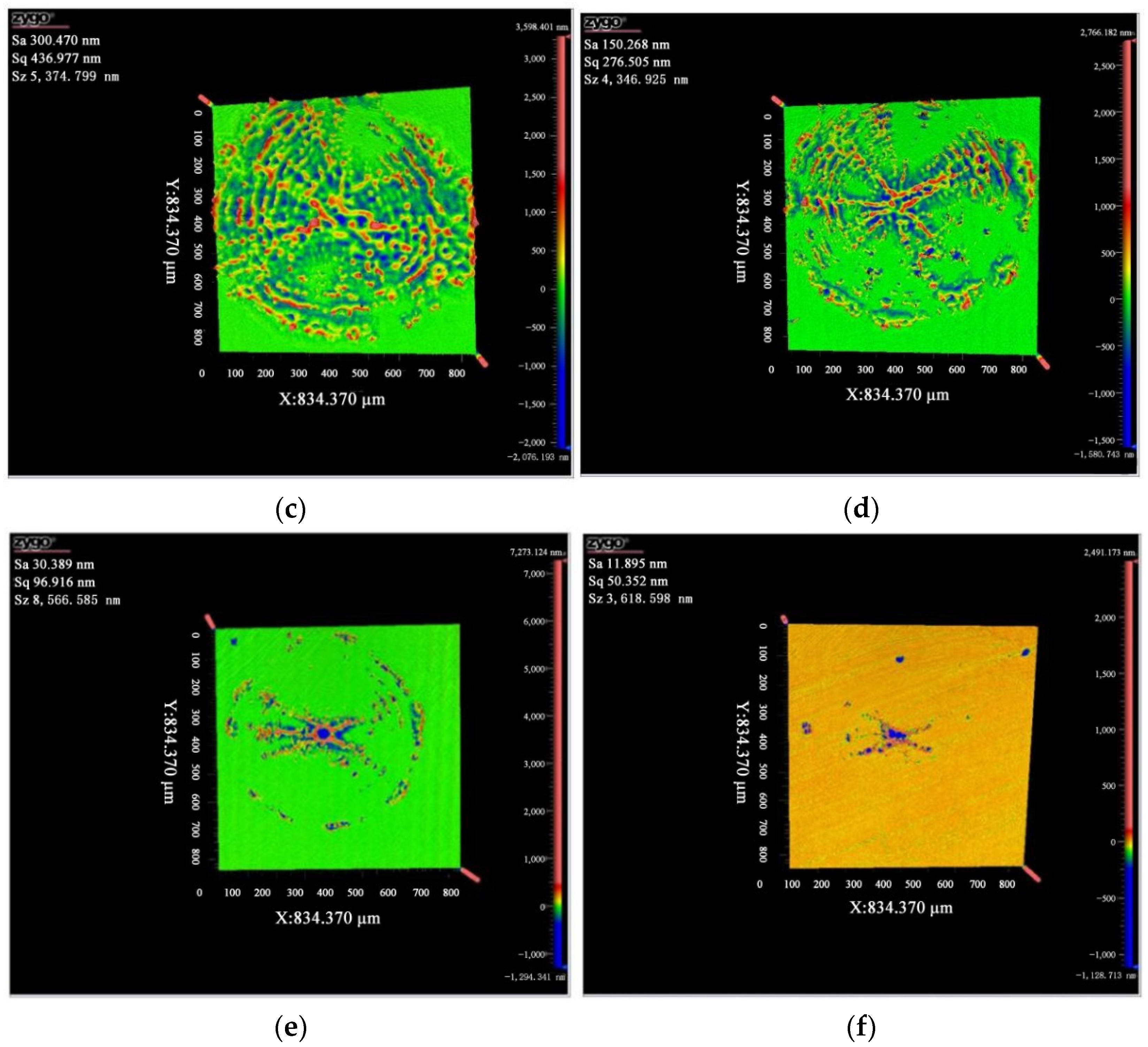
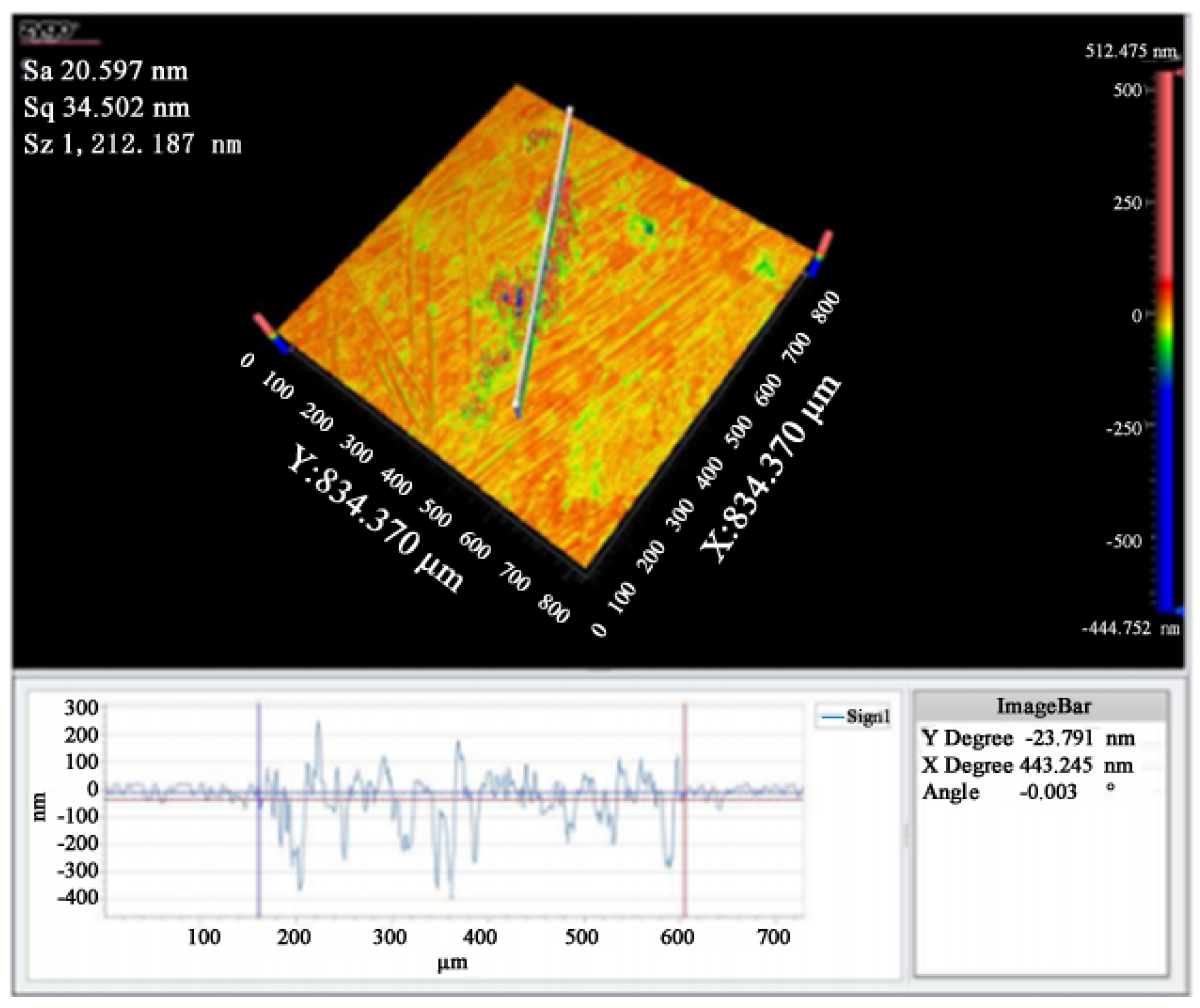
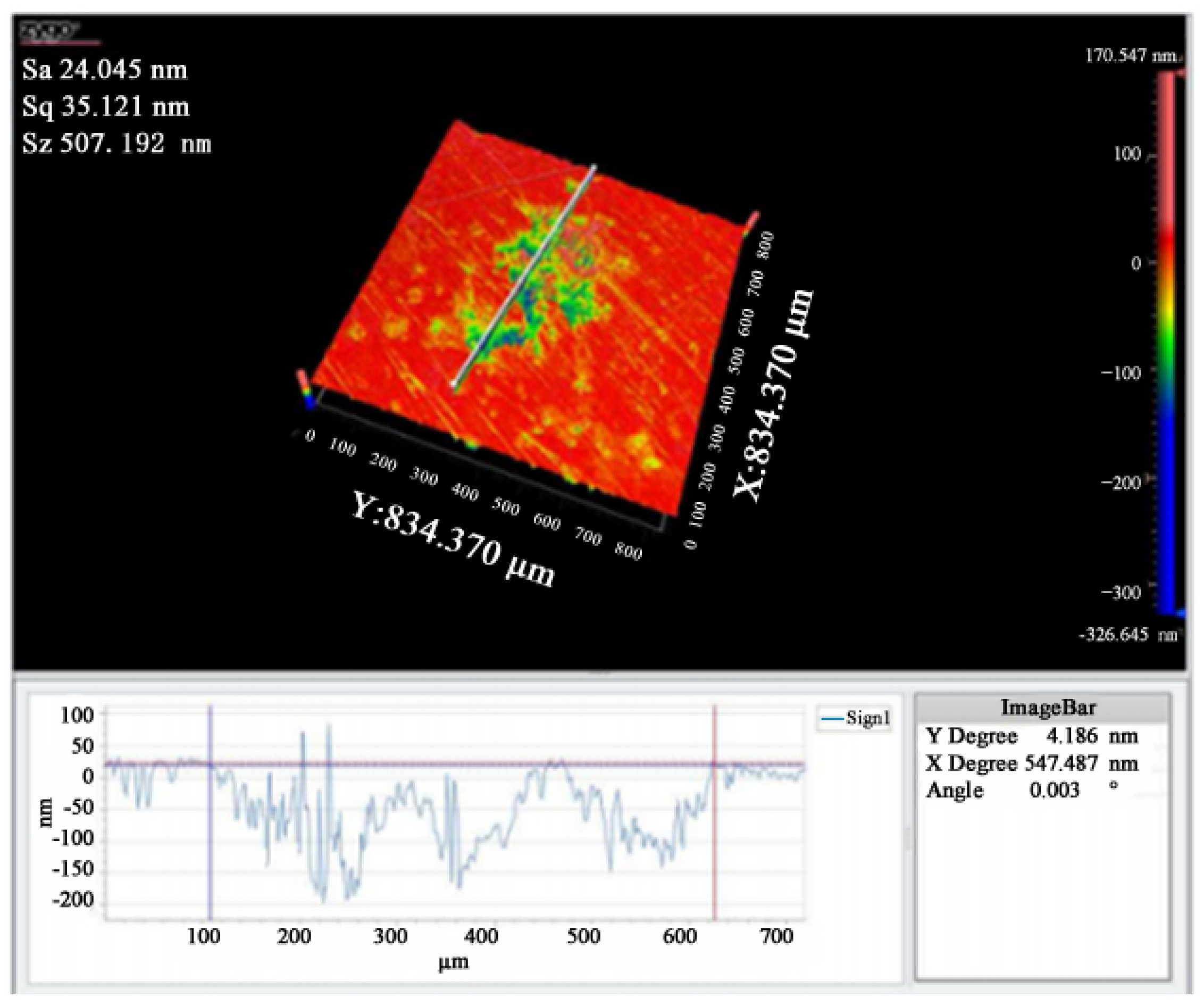
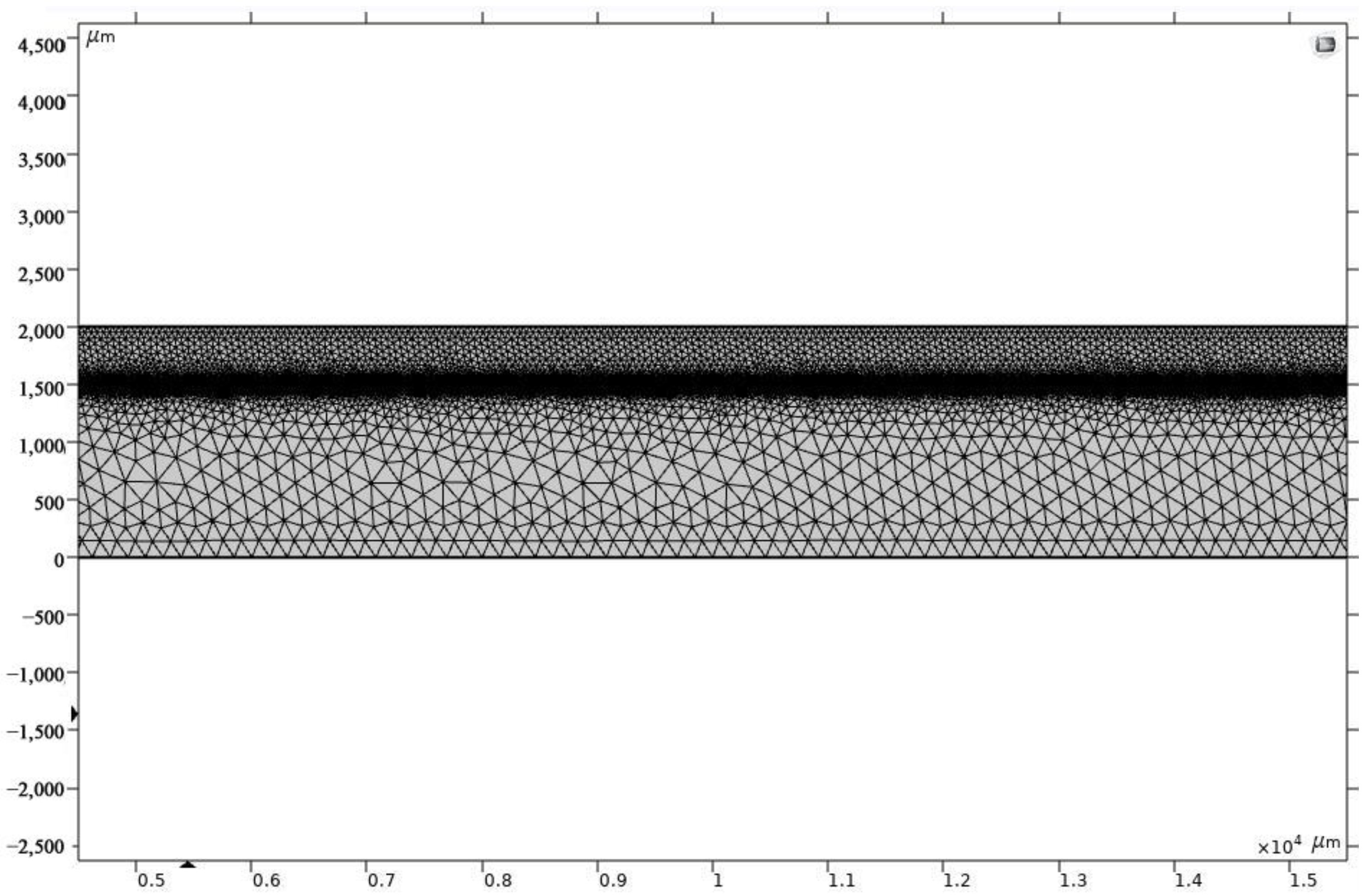
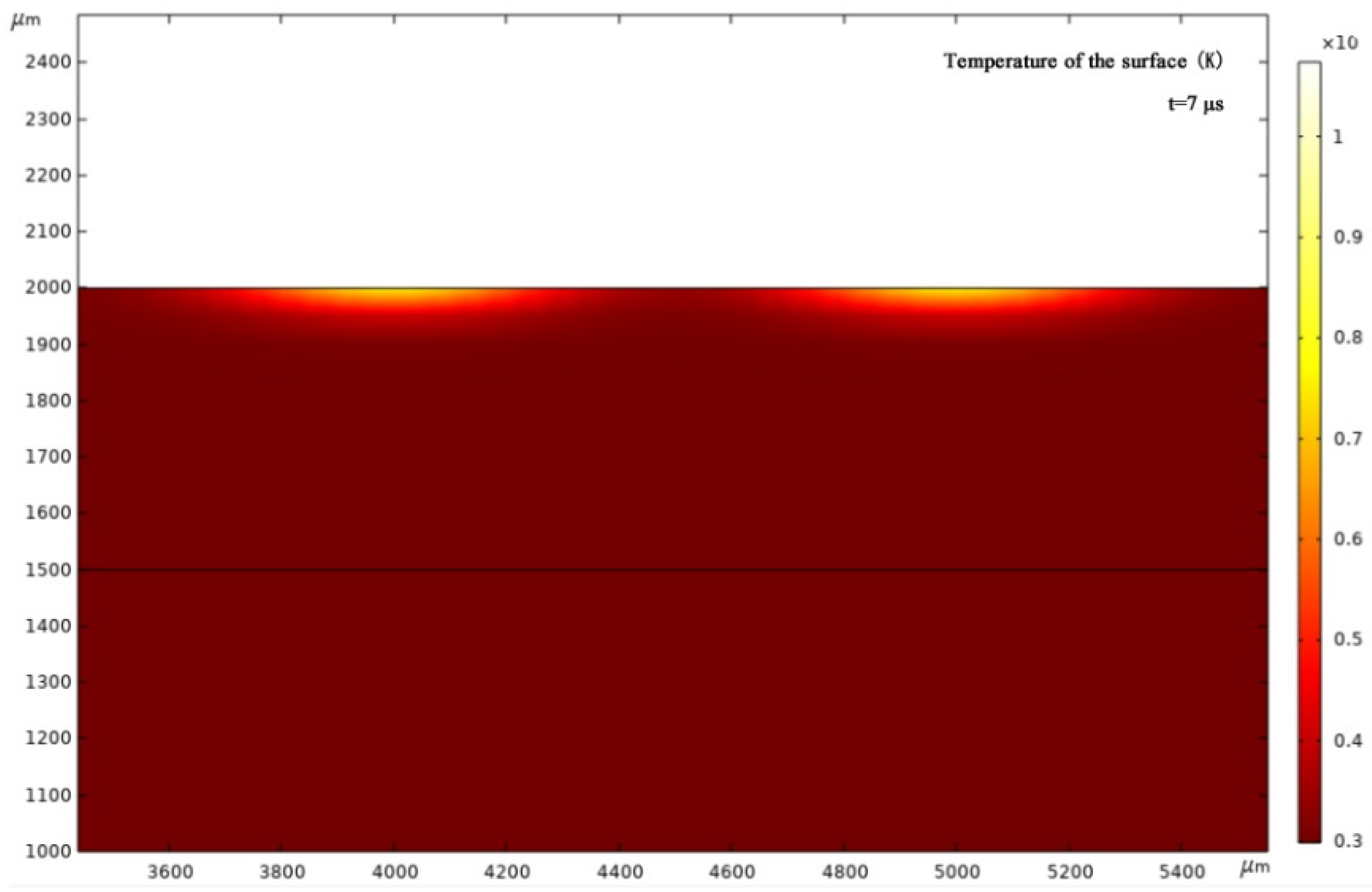
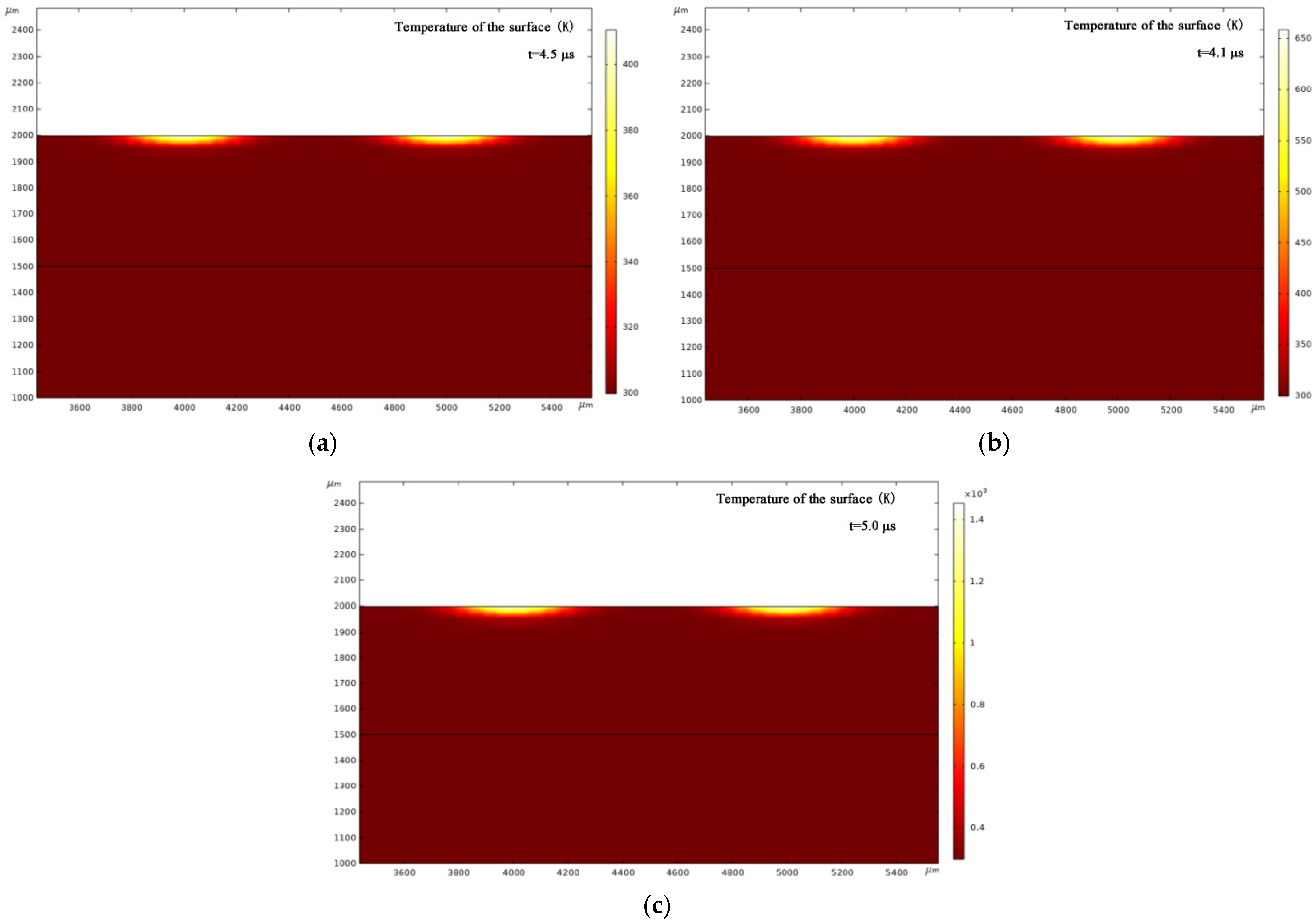
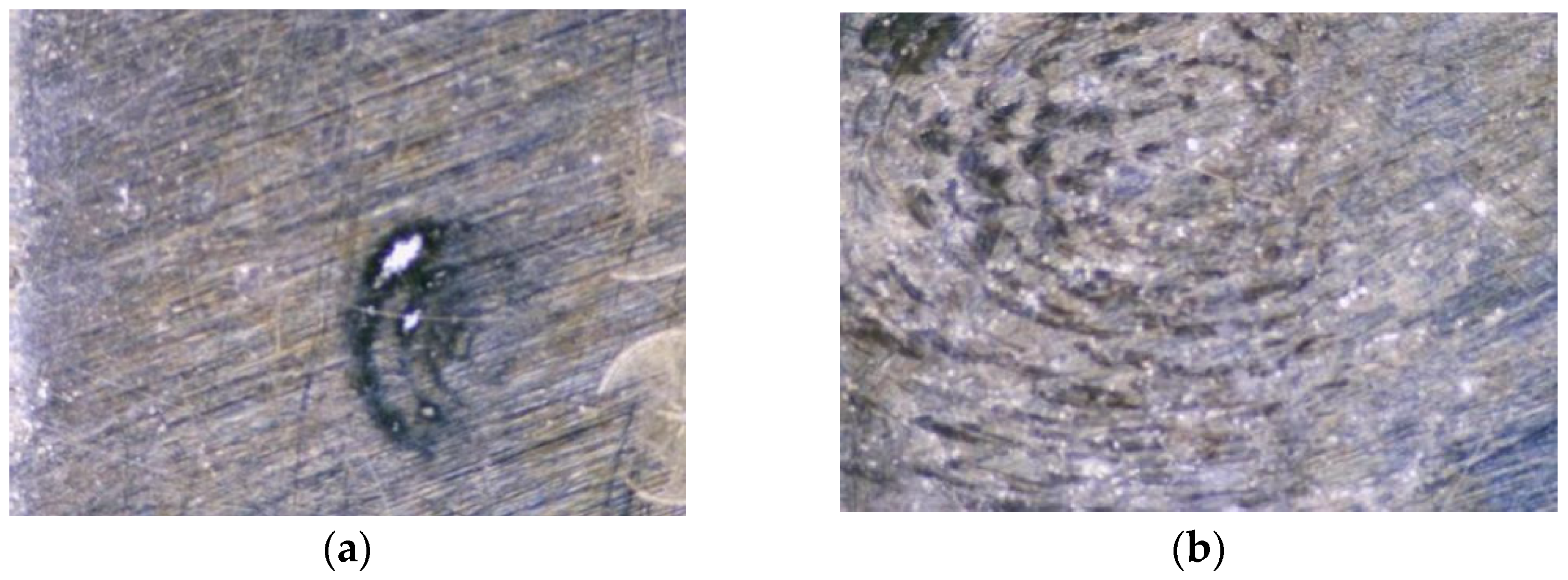
| Type | Radius of Curvature | Thickness | Glass | Diameter | Conical Coefficient |
|---|---|---|---|---|---|
| Cylinder | 2 mm | 5 mm | BK7 | 3 mm | −1.600 |
| Symbolic | Expression | Value | Name |
|---|---|---|---|
| H_s | 205 (kJ/kg) | 2.05 × 105 J/kg | Sublimation heat |
| T_a | 900 (degC) | 1173.2 K | Burning temperature |
| rho | 8900 (kg/m3) | 8900 kg/m3 | Density |
| Cp | 390 (J/kg/K) | 390 J (kg·K) | Specific heat |
| k | 397 (W/m/K) | 397 W/(m·K) | Coefficient of thermal conductivity |
| r_sport | 20 (μm) | 2 × 10−5 | Spot radius |
| x0 | 4000(μm) | 4 mm | Left spot position |
| x1 | 5000 (μm) | 5 mm | Right spot position |
| P_total | 1 (W) | 1 W | Total laser power |
| P_density_avg | P_total/(pi*r_sport^2*H) | 39,789 W/m2 | Average laser power |
| H | 20,000 | 20,000 | Laser frequency |
Publisher’s Note: MDPI stays neutral with regard to jurisdictional claims in published maps and institutional affiliations. |
© 2022 by the authors. Licensee MDPI, Basel, Switzerland. This article is an open access article distributed under the terms and conditions of the Creative Commons Attribution (CC BY) license (https://creativecommons.org/licenses/by/4.0/).
Share and Cite
Li, D.; Li, S.; Wang, K.; Cheng, J.; Wang, J.; Wu, S.; Su, J. Study of the Explosive Bridge Film Using Laser Shaping Technology. Micromachines 2022, 13, 854. https://doi.org/10.3390/mi13060854
Li D, Li S, Wang K, Cheng J, Wang J, Wu S, Su J. Study of the Explosive Bridge Film Using Laser Shaping Technology. Micromachines. 2022; 13(6):854. https://doi.org/10.3390/mi13060854
Chicago/Turabian StyleLi, Dangjuan, Siyu Li, Kexuan Wang, Junxia Cheng, Jia Wang, Shenjiang Wu, and Junhong Su. 2022. "Study of the Explosive Bridge Film Using Laser Shaping Technology" Micromachines 13, no. 6: 854. https://doi.org/10.3390/mi13060854






